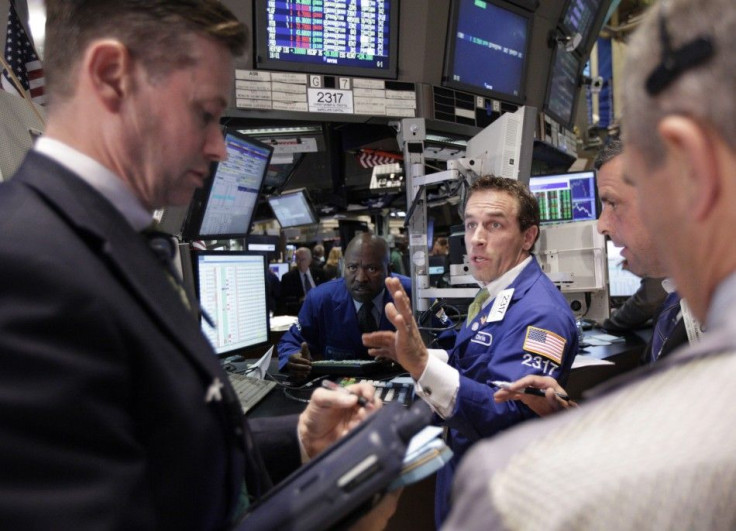U.S. Stocks: 5 Reasons Why the Dow Will Surge to 13,000 by June

From the headlines in metropolitan daily U.S. newspapers (and Web sites), you'd think society had just been gripped by another bubonic plague.
To be sure, the nation is going through a challenging time economically -- and it appears both socially and politicaly -- but the U.S. has overcome worse before, so if you're invested in stocks, don't fret.
Accordingly, here's the bullish case -- five reasons why, from least serious to most important -- the Dow Jones Industrial Average (DJIA) is headed higher in the next six months.
5. Exports. U.S. exports continue to shine: they totaled $177.6 billion in August, a 14 percent increase from the $154.9 billion total a year ago, in August 2010. Export growth is one the best kept secrets in the U.S. economy, as lean, innovative U.S.-best multi-national corporations (MNCs), continue to more than hold-their-own on the global stage.
Companies like Boeing (BA), General Electric (GE), Caterpillar (CAT), and United Technologies (UTX), are leaders in commercial airplanes, power generation equipment, agriculture/construction equipment, elevators and cooling/heating system. Moreover, the developing world -- especially China, India, Brazil, Russia, and Mexico, continues to build-out its infrastructure, and that is a bullish long-term, secular trend for corporate revenue.
4. Jobs bill. True, Democrats and Republicans rarely agree on anything these days in Washington, but recent social developments suggests their may be a deal on a jobs bill. Social developments outside the beltway, that is, in the form of the Occupy Wall Street (OWS) protest movement seeking economic and fiscal reform.
It's too soon to form a meaningful conclusion regarding Occupy Wall Street's impact, but the early drift is clear: pressure is building for action, if not major change -- Washington's major players sense this, hence we may even get a jobs bill passed. Most likely, it will be a modest $200 billion to $200 billion bill that combines tax credits with stimulus, offset by cuts in future budgets. The GDP impact will be modest, but investors -- and certainly job seekers -- will take it.
3. Pent-up demand / autos / manufacturing. Weighed down by stagnant median incomes, high debt, and uncertainty about the status of their current job, Americans have been in belt-tightening mode for about three years. It's the era of the frugal consumer. However, that frugality has limits: used cars need maintenance, washing machines need to be replaced, and growing kids need new clothes. Also, the U.S. manufacturing sector continues to expand -- with tech-intensive manufacturing leading the way. Thatpent up demand and manufacturing output are two tailwinds for U.S. GDP -- decreasing the likelihood of a double-dip recession.
2. Don't fight the Fed. A major data point in the bulls' argument. Although there are monetarists on the U.S. Federal Reserve who want the central bank to start to wind-down its quantitative easing program, the accommodationists -- or those who favor a looser monetary policy -- are in the majority. And that means credit markets -- assuming the resolution of the European government debt crisis -- are likely to continue to heal, with real interest rates remaining low. Each is bullish for the economy, moving forward. There is the risk of higher inflation in 2012, but given the large amount of wealth destruction triggered by the financial crisis, runaway inflation is not likely.
1. The U.S. economy itself. Despite all of its problems, and its polarized political parties, and the era's inability to invest in public goods, the U.S. economy remains the envy of the world. Its economic system is still very capital friendly and it remains the largest, universal-standard, commercial zone in the world. The U.S. also remains the most technologically-advanced economy in the world -- and very flexible and resilient -- able to withstand losses of whole sectors and, via ingenuity and new technologies, create new engines of both GDP growth and job growth.
Market Analysis: Strong exports. A deal on the jobs bill inside the beltway. Pent up demand for goods and a humming manufacturing sector. A central bank committed to preventing another Great Depression. A flexible, resilient free market economy.
Add the data up and there's ample evidence to suggest that corporate earnings growth will be adequate or exceed expectations in the first and second quarters of 2012. And as they say on Wall Street, as corporate earnings go, so goes the U.S. stock market.
In other words, the bulls can make strong case for a Dow rise to 12,500 by March, and then to 13,000 over the next six months.
© Copyright IBTimes 2024. All rights reserved.





















